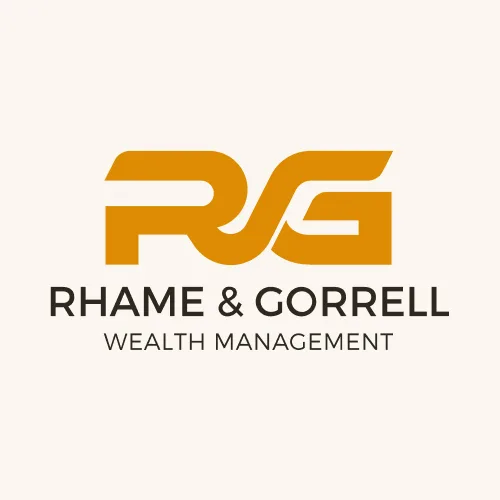RGWM Market Thoughts – October 10, 2018
Top-Heavy Trade Tumble: What’s Happening Under the Hood
The combination of increased global trade tensions and China and rising interest rates continue to weigh on the market, and as of this writing, the S&P is on its way to having the worst week in performance since April. Even more striking has been the performance of market leaders – through October 9th, the year’s best performing stocks are down about -6% while the broader market is down just -1.5%. Putting aside the macro fears of trade and interest rates for a moment (which we have previously talked about as being somewhat overblown) we wanted to focus on the market leader underperformance issue and investigate whether this is an early warning sign that the decade long bull market is about to run out.
One major concern for many investors has been the narrow breadth of the market. When a small group of stocks is contributing to the majority of the overall market return, it can lead to potential instability if that “leadership” at the top falters. This situation can be caused by a number of factors – asset allocation changes, fundamental valuation or even technical factors, but the key question to address is whether or not these changes portend a larger danger to the overall market or sector.
This is the situation that investors face today. The top-10 companies have accounted for 53% of the total return of the S&P 500 Index so far this year, versus 30% in 2017. At first glance, this is exactly the kind of situation that has worried many market participants and seems to be a key theme behind the recent asset allocation away from market leaders and in sector rotation away from technology. In fact, a similar sector rotation happened during 2011 and 2015 during which more than 60% of the names in the S&P suffered 20% or more declines during the years. However, if you “look under the hood” at the rest of the S&P constituents today a different picture emerges. In fact, the median stock’s EPS growth stands at 21%, versus a 20-year average of 0.2%. That is not indicative of a market that is wildly expensive. From a valuation perspective, the overall U.S. market is at the upper range of normal, but the underlying EPS estimates are significantly above normal.
The second point we would like to make is that these market leadership changes have somewhat of a seasonal bias. Since 1990, the lowest quintile performing stocks have outperformed the highest quintile by an average of about 1.1% in October and November. That relationship does not exist in any other monthly period. While historical precedent is not a formula for future investment, it does seem to suggest that there may be some non-investment related reasons for the disparity. However, in trying to determine whether or not this corrective phase may lead to something more sinister, it is useful to look at underlying market measures.
Importantly, at least until today, broad-based selling pressure has remained muted with NYSE breadth actually positive yesterday. Another notable measure is that the put/call data has started to elevate, a condition that is often associated near tactical lows. As noted earlier, the technology sector has been a primary culprit of market weakness, and more than 60% of the companies in the sector are putting in 20 day lows. However, the silver lining to the clouds in tech is that this situation has tended to portend positive results going forward, making these dips “buyable”. Once this level has been breached, returns for the following 65 days have averaged 4.2% and 8.2% for the next 125 days.
As we have talked about during previous market pullbacks, (see notes in February and August 2017) these moves are part of the normal market dynamic. The most important factor in evaluation of whether these smaller moves become a larger issue relates to the strength of the economy and the trajectory of corporate earnings. Until we see signs of weakness in those areas, we feel that volatile periods like we are currently experiencing are opportunities to reallocate risk to sectors that are being unduly penalized.
Need Some Help?
If you’d like some help from one of our CPAs or CERTIFIED FINANCIAL PLANNER (CFP®) advisors regarding this strategy and how it applies to you, the Rhame & Gorrell Wealth Management team is here to help.
Our experienced Wealth Managers facilitate our entire suite of services including financial planning, investment management, tax optimization, estate planning, and more to our valued clients.
Feel free to contact us at (832) 789-1100, [email protected], or click the button below to schedule your complimentary consultation today.
IMPORTANT DISCLOSURES:
Corporate benefits may change at any point in time. Be sure to consult with human resources and review Summary Plan Description(s) before implementing any strategy discussed herein.Rhame & Gorrell Wealth Management, LLC (“RGWM”) is an SEC registered investment adviser with its principal place of business in the State of Texas. Registration as an investment adviser is not an endorsement by securities regulators and does not imply that RGWM has attained a certain level of skill, training, or ability. This material has been prepared for informational purposes only, and is not intended to provide, and should not be relied on for, tax, legal or accounting advice. You should consult your own CPA or tax professional before engaging in any transaction. The effectiveness of any of the strategies described will depend on your individual situation and should not be construed as personalized investment advice. Past performance may not be indicative of future results and does not guarantee future positive returns.
For additional information about RGWM, including fees and services, send for our Firm Disclosure Brochures as set forth on Form ADV Part 2A and Part 3 by contacting the Firm directly. You can also access our Firm Brochures at www.adviserinfo.sec.gov. Please read the disclosure brochures carefully before you invest or send money.













